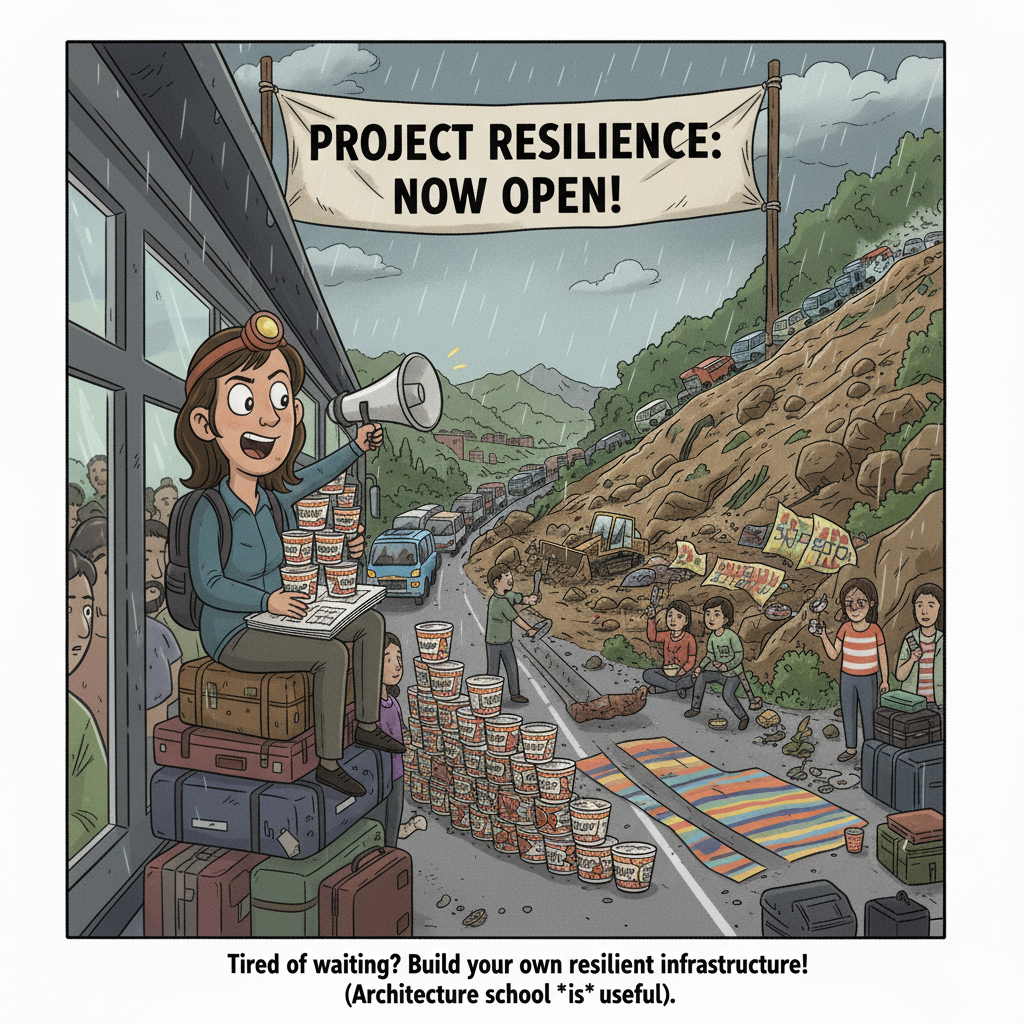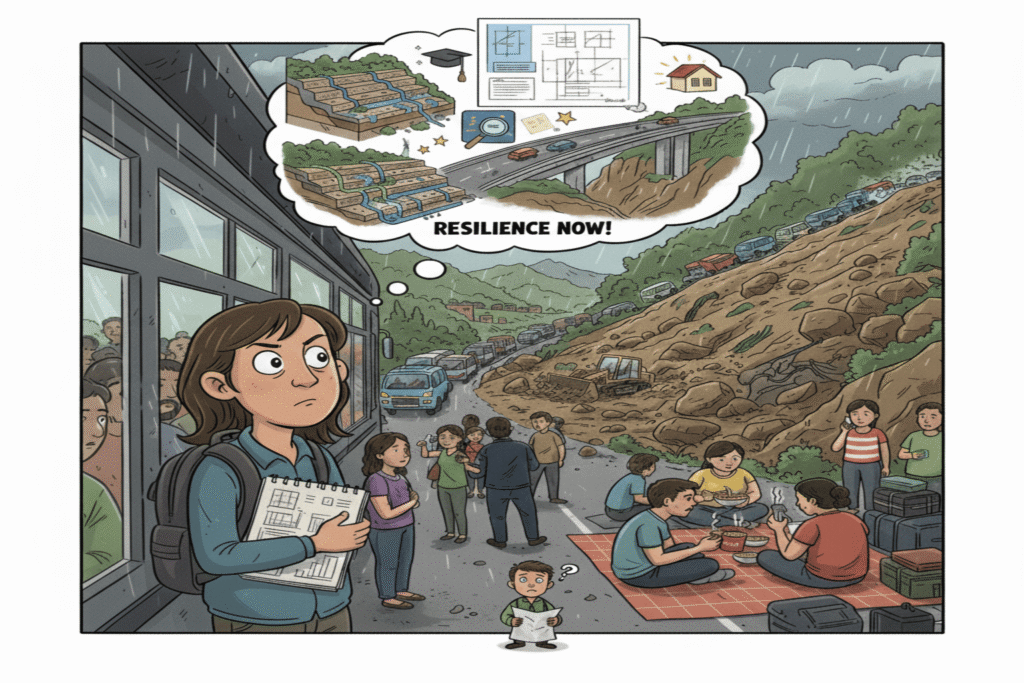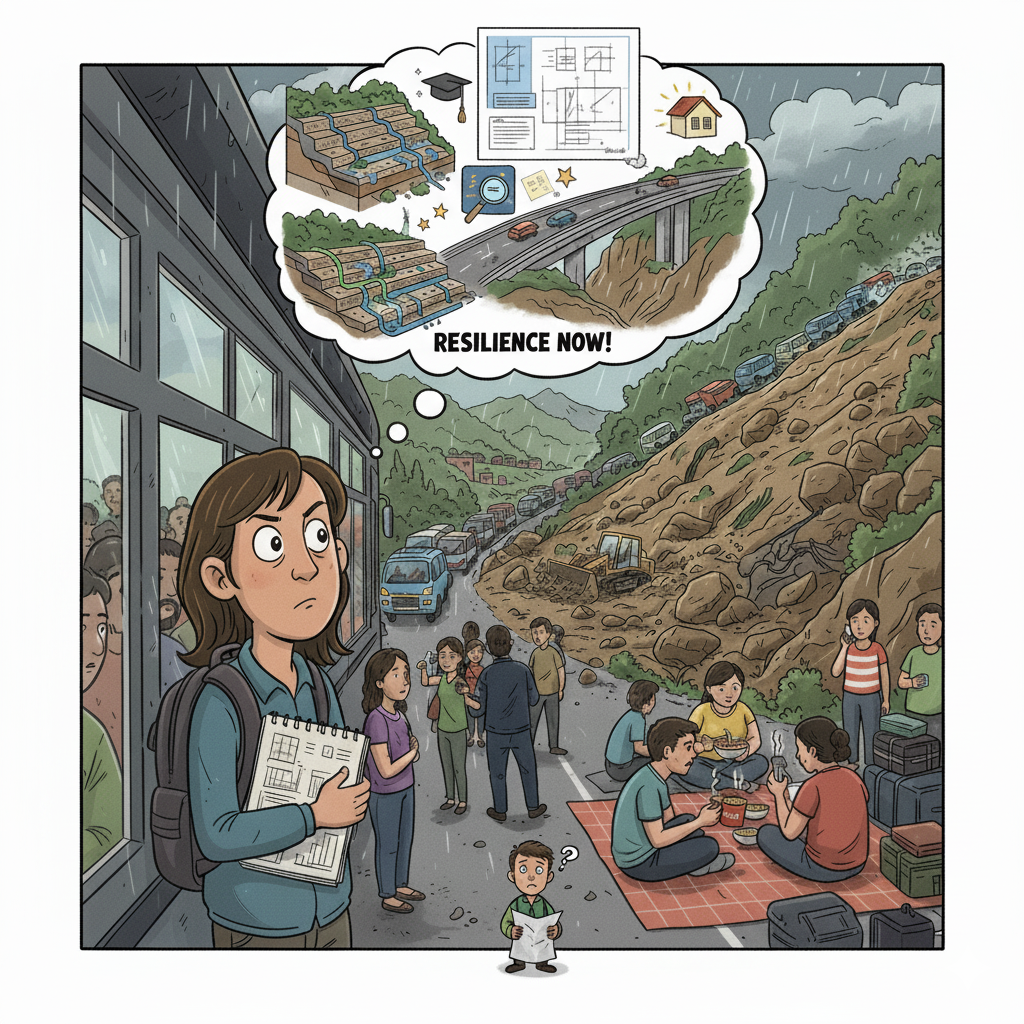Every time I travel between Kathmandu and my hometown Chitwan, the Muglin road feels like a gamble. On good days it’s just a winding highway through the hills, on bad days it turns into hours of waiting because a landslide has blocked the way. I’ve lost count of how many times I have been stuck there, watching long lines of vehicles, people sitting on the roadside eating instant noodles, drivers calling home to explain they will arrive late. It almost feels normal now.
But as an architect, I can’t see it as normal anymore. This is one of the most important lifelines of the country. It connects the capital to the Terai, it carries goods, medicine, students, families. And yet, every monsoon the same thing happens. The hill collapses, the road gets buried, and all we do is wait for bulldozers to clear it. Next year, it repeats again.
I keep asking myself why we have accepted this cycle. Why don’t we talk about resilient design the way we talk about clearing debris? Drainage could be planned better so water doesn’t cut through the slopes. Retaining structures could be designed more intelligently instead of quick patchwork. Maybe even new alignments could be explored instead of depending on the same fragile stretch.
Architecture is not just about designing buildings. It is about reading the landscape, understanding risks, and designing for people’s safety and continuity of life. If we can think of earthquake-resistant homes, why can’t we push for landslide-resistant highways?
What worries me most is how used to disasters we’ve become. A roadblock for hours, sometimes days, doesn’t even shock us anymore. But if we really want to move forward, resilience needs to be part of the conversation, not only among architects and engineers but also among everyone who uses these roads every single day.
Maybe my frustration while sitting in that bus is not just about being late or wasting time. It comes from realizing how fragile our systems are, how easily our daily lives can be disrupted by forces we already know will return every year. I keep wondering if we will continue to accept this as our reality or if someday we will finally decide to design differently, to build with resilience in mind, so that future travelers don’t have to sit by the window of a stuck bus questioning their life choices the way I often do.



